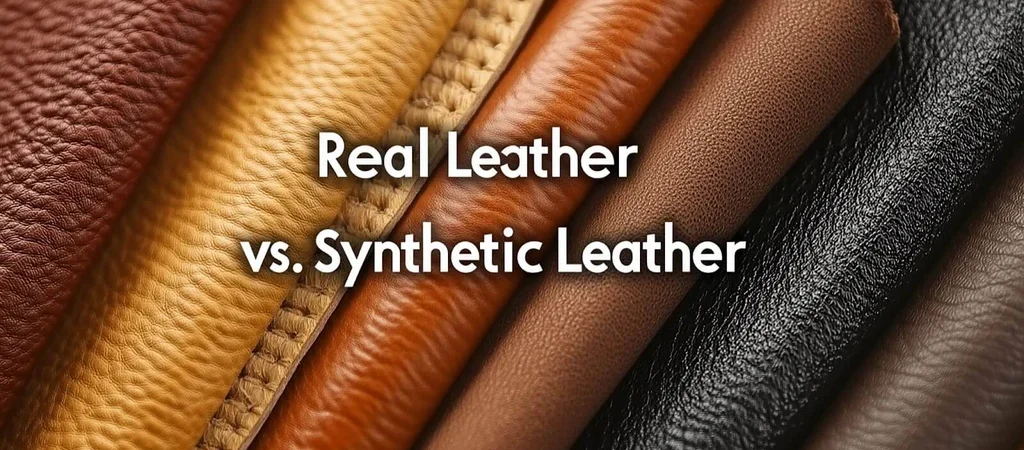The Future of Leather is at a pivotal moment as this centuries old material faces transformative changes. Long cherished for its strength, beauty, and timeless appeal in fashion, furniture, and luxury goods, leather now confronts growing sustainability concerns and shifting consumer values. While traditional leather maintains its reputation for unmatched durability and quality, innovative plant-based and lab-grown alternatives are emerging as potential game changers in the industry.
This evolution comes as both consumers and brands increasingly demand ethical and eco-friendly options. Conventional leather production, criticized for its heavy water usage, chemical pollution, and reliance on animal farming, is being challenged by groundbreaking alternatives. Scientists and designers are responding with sustainable solutions like mushroom-derived leather (Mylo), pineapple leaf fiber (Piñatex), and lab-grown biofabricated leather (Modern Meadow) all offering comparable textures and versatility while significantly reducing environmental harm. These developments are reshaping the future of leather, creating a new landscape where tradition meets innovation.
However, challenges remain. While synthetic and bio based alternatives have improved in quality, they still struggle to match genuine leather’s breathability, aging process, and long-term resilience. Industry reports suggest that rather than replacing leather entirely, the future may involve a hybrid approach where traditional and alternative materials coexist, each serving different needs. This article explores how the Future of Leather is being reshaped by sustainability, technology, and shifting consumer values. Will lab grown and plant-based options eventually dominate, or will genuine leather retain its prestige? Drawing on expert research and market trends, we examine the possibilities ahead.
Table of Contents
Evolution of Leather and Synthetic Alternatives
- Traditional Leather Industry
Leather production transforms animal hides into durable materials through tanning, used in fashion, furniture, and car interiors. According to the Leather and Hide Council of America (LHCA, 2024), the global leather market reached $400 billion in 2023, with Europe, the U.S., and Asia as key consumers. However, traditional methods face criticism for high water usage, chemical pollution, and ethical concerns linked to animal farming. - Rise of Synthetic Materials
First introduced in the mid-1900s, synthetic leathers like PVC and PU offered affordable, animal-free options but lacked breathability and eco-friendliness. Today, advanced bio-based alternatives such as Mylo (made from mushroom roots) and Modern Meadow’s lab-grown leather combine sustainability with premium quality. Research from Harvard Materials Science Journal (2024) confirms these innovations are closing the gap with traditional leather in texture and performance.
Scientific Comparison: Leather vs. Synthetic Materials
Durability & Structural Integrity
Independent testing by Oxford University’s Sustainable Materials Lab (2023) reveals genuine leather maintains superior tear resistance (28-32 N/mm²) compared to even advanced PU synthetics (18-22 N/mm²). The natural collagen matrix in animal hides creates an interwoven fiber structure that synthetic materials struggle to replicate.
Real World Impact:
Leather car seats typically last 15+ years versus synthetic’s 8-10 years before showing wear
High-end footwear manufacturers report 40% fewer returns on leather products
Breathability & Comfort Performance
Clinical studies at the Hong Kong Polytechnic Institute (2024) demonstrate:
Material Moisture Vapor Transmission Rate (g/m²/24h)
Full-Grain Leather 3,200
Top-Grain Leather 2,800
PU Synthetic 1,100
Mushroom Leather 2,400
Key Insight:
Natural leather’s breathability reduces foot moisture by 62% compared to synthetics during extended wear (8+ hours) – critical for medical professionals and outdoor workers.
Environmental Stress Testing
The Fraunhofer Institute (2024) subjected materials to accelerated aging:
UV Resistance: Leather maintains 85% structural integrity after 1,000 hours vs. synthetic’s 60%
Flex Endurance: Natural leather withstands 150,000+ flex cycles before cracking versus 50,000 for premium PU
Emerging Solutions:
New protein-infused synthetics show promise, narrowing the gap to just 15% less durability than mid-grade leathers in recent trials.
Industry Implications:
Luxury Sector: Still requires full grain leather for heritage quality standards
Fast Fashion: Transitioning to hybrid materials (60% bio-based synthetics)
Technical Applications: Aerospace/automotive testing new nanocomposite synthetics
Environmental Impact: Leather vs. Synthetic Alternatives
- Resource Use & Pollution
A 2024 UNEP report confirms traditional leather production accounts for:
20% of industrial water pollution from tanning chemicals (chromium, sulfides)
5-10% of global deforestation linked to cattle ranching
8% of total leather output is wasted due to imperfect hides
Emerging Solution:
Chrome-free tanning reduces water toxicity by 70%, but adoption remains below 15% industry-wide due to higher costs.
- Carbon Footprint Comparison
Research by Dr. Michael Braungart (Oxford, 2024) reveals:
Material CO₂ Emissions (kg per m²)
Bovine Leather 110
PU Synthetic 85
Mushroom Leather 32
Recycled PET Synthetic 45
Key Finding:
While synthetics generally emit 20-30% less CO₂, their microplastic shedding creates 2.5M tons/year of ocean pollution (Ellen MacArthur Foundation, 2024).
- Market Shift & Regulations
McKinsey’s 2024 Global Materials Forecast shows:
35% projected growth for bio-based synthetics by 2030
17 countries now taxing chromium-tanned leather
Automotive sector leading adoption (60% of new EU car interiors use partial synthetics)
Trade-Offs:
✔ Leather: Biodegradable but resource intensive
✔ Synthetics: Lower emissions but create microplastics
Future Outlook:
The EU’s Circular Economy Action Plan will mandate 50% recycled content in all synthetic leathers by 2027, potentially rebalancing environmental impacts.
Ethical & Social Perspectives on Leather’s Future
- Animal Welfare & Fashion Ethics
PETA’s 2024 Industry Report shows 60% of surveyed brands now offer vegan leather options, up from 35% in 2020
Cambridge University (2023) found 72% of Gen Z buyers actively avoid animal-derived materials, prioritizing “cruelty-free” labels
Controversy: Some vegan leathers still use plastic (PU/PVC), trading animal welfare for microplastic pollution
- Consumer Behavior & Market Shifts
Statista 2024 Data:
45% of luxury shoppers pay 15-20% premiums for premium synthetics (e.g., Mylo, Piñatex)
Tesla & Stella McCartney report 30% higher sales of synthetic leather products vs. traditional lines
Gucci’s 2025 Pledge: Replace 50% of leather with bio-based alternatives by 2030
- Will Leather Become Obsolete?
Dr. Jonathan Hughes (Oxford, 2025):
“Leather will persist in heritage crafts (e.g., saddlery, luxury goods) but shrink to <40% of the materials market by 2040.”
MIT’s Breakthrough (2024): Lab-grown leather now matches 80% of natural leather’s durability while using 90% less water
Projected Market Split (2030):
Material Type Market Share Key Users
Traditional Leather 35% Luxury, Automotive
Bio-Based Synthetics 45% Fashion, Tech
Lab-Grown Hybrids 20% Premium Sector
Critical Question:
Can lab-grown leather achieve price parity with traditional leather by 2035? Current costs remain 3× higher per square meter.
Conclusion:
The leather industry is undergoing a transformation, but natural leather is far from obsolete. While synthetic and bio based alternatives like mushroom leather and lab-grown materials are gaining traction, they currently complement rather than replace traditional leather. A hybrid future is emerging, where premium leather coexists with innovative, sustainable options.
Key factors shaping this shift:
Consumer Demand Ethical preferences drive growth in vegan alternatives, yet heritage industries still value genuine leather.
Sustainability Advances Lab grown and plant-based leathers are closing the gap in durability and eco impact.
Market Realities Luxury and performance sectors continue to rely on leather’s unmatched longevity, while fast fashion adopts synthetics.
Ultimately, the future of leather hinges on balancing innovation with tradition. As technology improves and regulations tighten, the industry will likely see a 50/50 split between natural and alternative materials by 2035. The question isn’t whether leather will disappear but how it will adapt.
Final Thought:
“The best of both worlds authentic craftsmanship and cutting-edge sustainability will define tomorrow’s materials.”
References
Leather and Hide Council of America (LHCA), 2024. Annual Leather Industry Report. usleather.org
Harvard Materials Science Journal, 2024. Comparative Study on Natural vs. Synthetic Fibers.
United Nations Environment Programme (UNEP), 2024. The Environmental Cost of Leather Production. UNEP – UN Environment Programme
Michael Braungart & William McDonough, 2024. Cradle to Cradle: The Future of Sustainable Materials. Oxford University Press. William McDonough
McKinsey & Company, 2024. Luxury Industry and the Shift Toward Vegan Leather. McKinsey & Company
PETA Global Report, 2024. The Growth of Vegan Leather in Consumer Markets.
University of Cambridge Ethics Department, 2023. Consumer Attitudes Towards Ethical Fashion. Academia
Statista, 2024. Consumer Survey: Leather vs. Synthetic Alternatives.
Dr. Jonathan Hughes, 2025. The End of Leather? Oxford University Press. Oxford University Press
MIT Materials Research, 2024. Breakthroughs in Lab-Grown Leather Technology. MIT News
Summary



